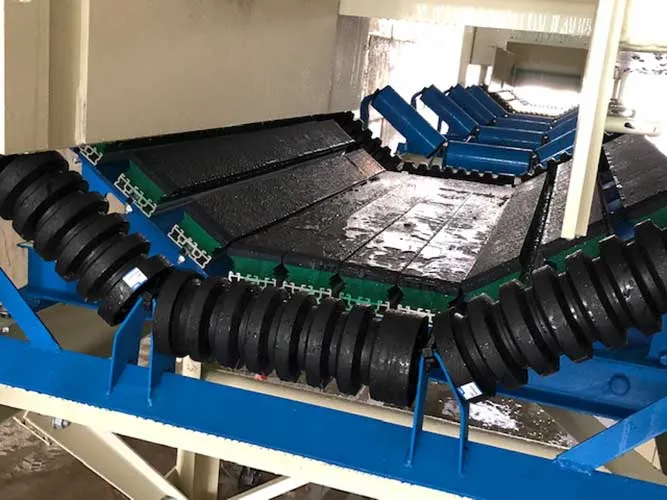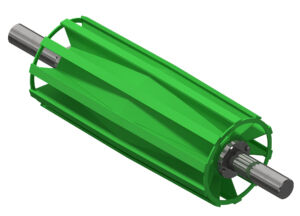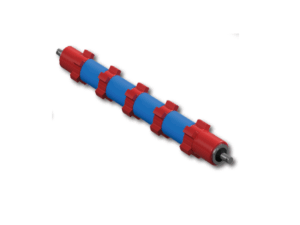In many heavy industries, conveyor belts take a beating from the materials you’re moving. Some materials have more impact than others, especially those that are heavy, sharp, or unusually shaped. These materials can wreak havoc on conveyor belts and the conveyor structure itself. Investing in a new or improved conveyor impact bed is helpful in these industries.
How Impact Beds Work
Impact beds are built to absorb shock and support the conveyor belt at transfer points, reducing wear and maintenance costs. They are particularly crucial for conveyors moving bulk and jagged materials in industries such as mining and quarrying. The impact bed is made of several impact bars, each comprising a high molecular polyethylene surface, an aluminum alloy frame, a high-quality natural rubber damping layer, and a metal seat. These components work together to cushion the collision and minimize damage to the belt.
Advantages of Impact Beds
Prevents Belt Damage and Extends Lifespan
The surface contact between the impact bar and the conveyor belt helps prevent puncture damage and reduces belt sagging at heavy loading points. The smooth surface of the impact bed minimizes friction, ensuring smooth operation of the conveyor belt and prolonging its service life. Maintaining the integrity of your belt is critical to your operations.
Reduces Maintenance Costs
By evenly distributing the stress on the belt, impact beds help eliminate material splashing and leakage, significantly lowering daily repair and maintenance costs.
Safety Impact
Impact beds are crucial for industrial safety. They absorb shock and reduce vibrations from heavy machinery, protecting workers and products alike. Impact beds also help preserve the structural integrity of surrounding areas by cushioning against vibrations that can cause damage over time. They reduce noise pollution, creating a more comfortable working environment for employees.
Noise Reduction and Heat Protection
Impact beds act as shock absorbers, dampening sound and vibrations from heavy machinery, thus reducing noise levels and improving safety standards. They also provide heat protection by decreasing friction, preventing excess wear on machinery and maintaining optimal efficiency for longer periods.
Maintenance Reduction and Cost Savings
Impact beds reduce the need for regular maintenance and repairs, saving businesses time and money. They provide reliable protection against heavy materials, preventing costly repairs and ensuring peak performance with minimal downtime. Additionally, impact beds help increase efficiency, reduce energy costs, and improve overall performance.
Industry-Specific Support by Luff Industries
Luff Industries offers a range of conveyor components, including high-quality impact beds tailored to various industries. Whether in construction, oil and gas, or managing a small- to medium-sized enterprise, Luff Industries has the expertise to provide the right impact bed for your needs. Our impact beds are designed to CEMA standards, ensuring they are built to absorb shock, minimize belt damage, and reduce maintenance costs, ensuring your operations run smoothly and efficiently.
Investing in high-quality conveyor impact beds can significantly enhance the longevity and efficiency of your conveyor belt systems. Don’t let material handling challenges slow you down. Explore our impact bed solutions and find the perfect fit for your conveyor system. Let us help you maintain consistent, reliable operation and protect your investment.




